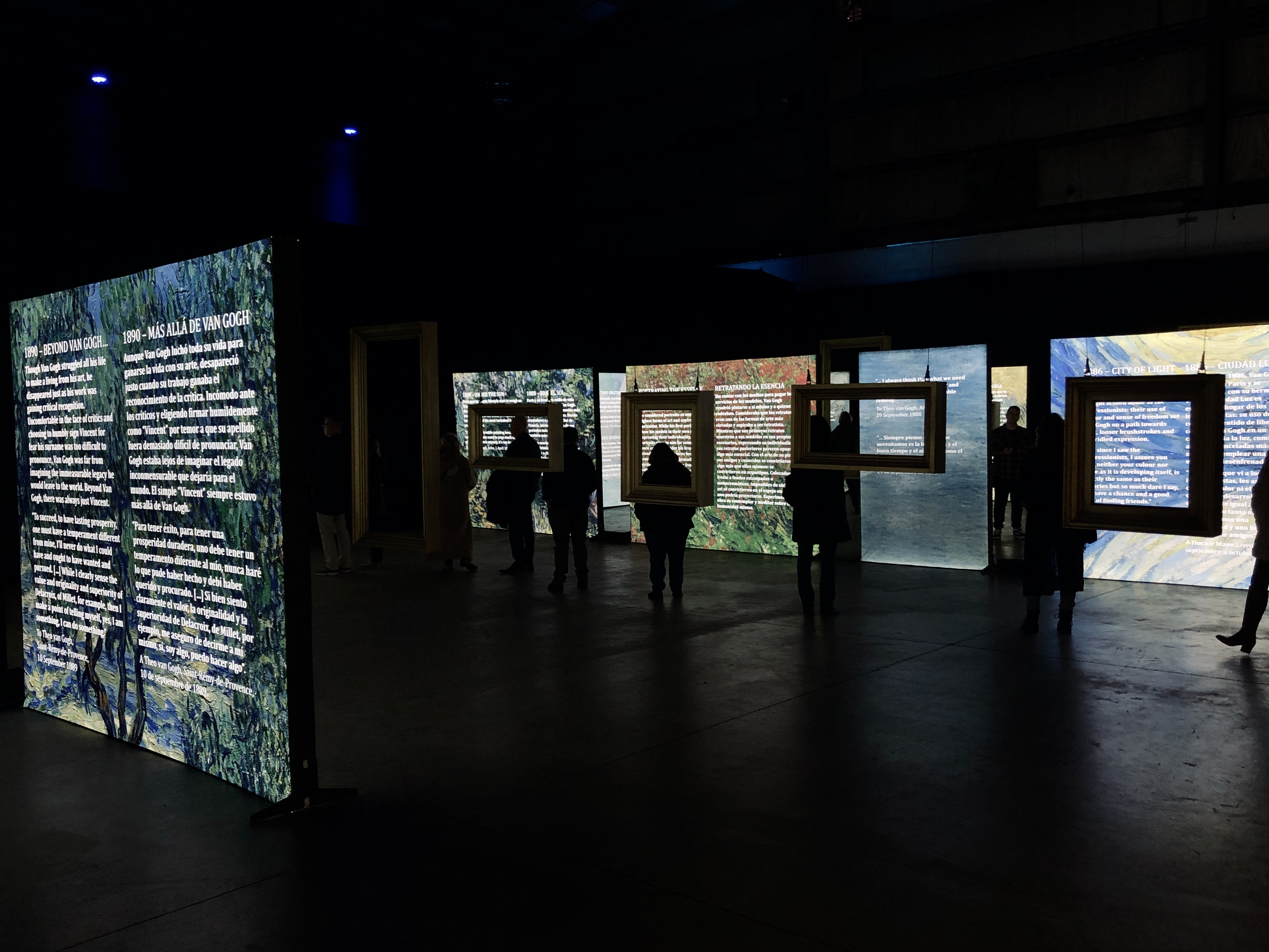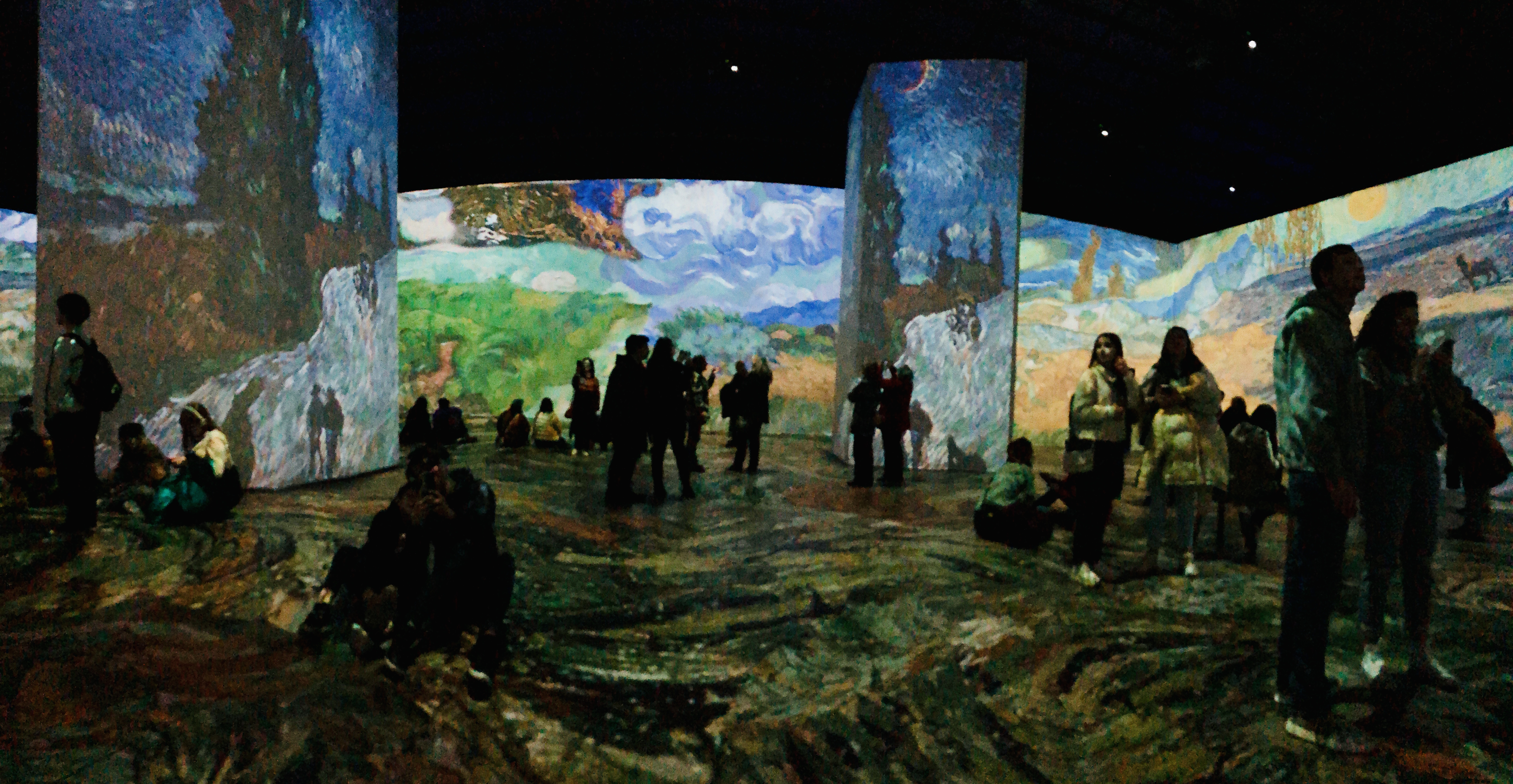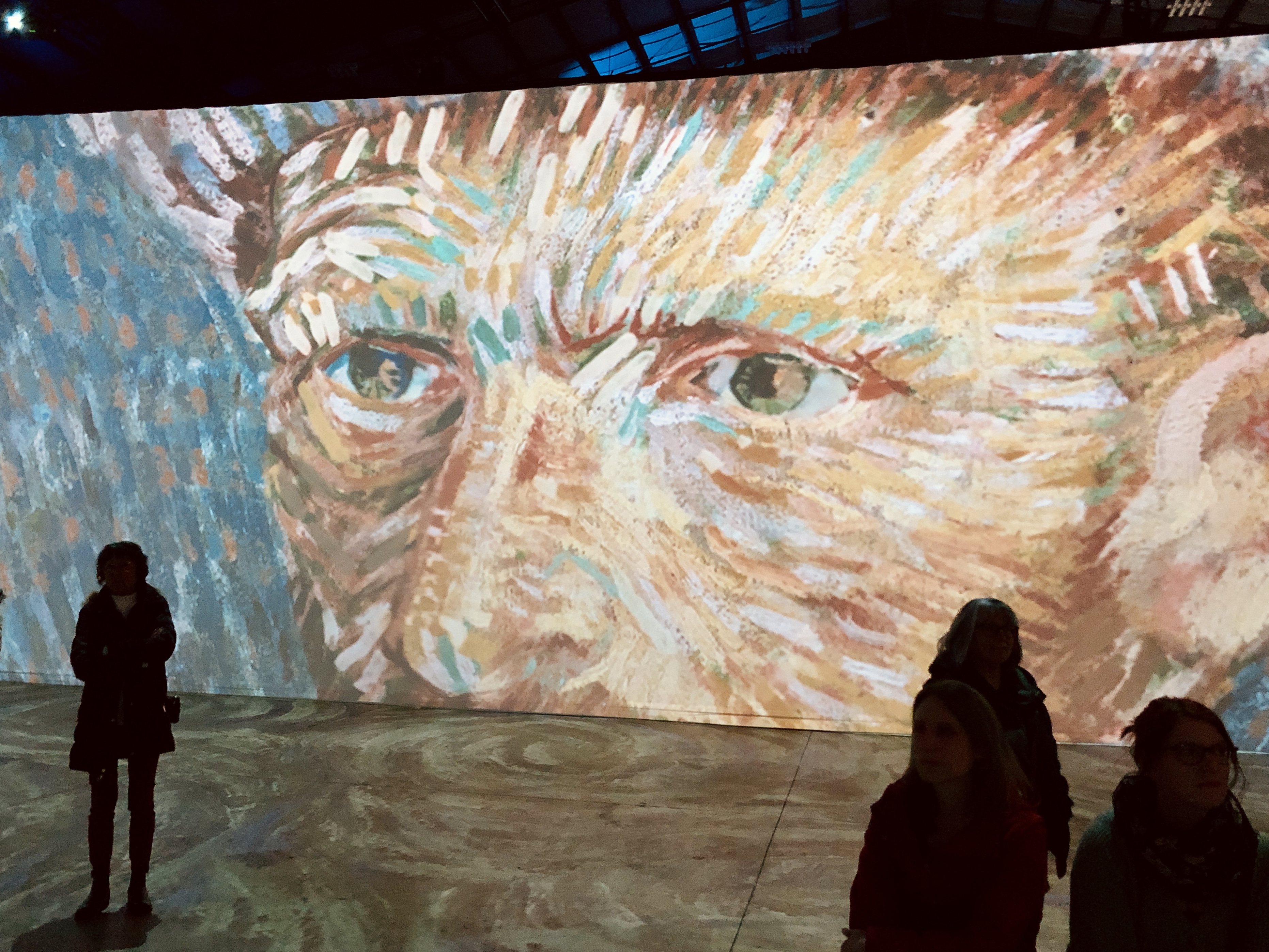Exhibit Visit
Beyond Van Gogh
Finally, after much request from my mother, I visited Beyond Van Gogh, the multimedia “immersive experience” that seeks to bring Van Gogh’s work to life in the modern age.
To be honest, I went into the exhibit with much skepticism. Seeing it often in the posts and stories of my friends’ social media, I questioned whether it was a true art experience or merely an Instagram trope. However, wanting to learn more about the great artist Vincent Van Gogh and being kindly offered this opportunity by my mother, I also went into the experience with open-mindedness and a good dose of optimism.
Arriving at the repurposed Cloverdale Agriplex, with soft music playing in the background and dim lights and black drapes around the display, there was immediately a grand and seemingly appreciative atmosphere.
After our tickets were checked, we walked into the first section: a series of backlit boards that tell the story of Van Gogh’s life. From his start as an art dealer to his eventual tragic death, these boards introduce Van Gogh to the audience and set the tone for the main display.

The boards also do a good job of showing the vibrant colours of Van Gogh’s work, something a TV or digital screen would never be able to do, for example. The varying shades and tones create the impression of texture and form, at times making me question whether there was real paint on the board.
After this, we are led into the main spectacle and the main display: a large room whose every surface has been projected with works of Van Gogh. First walking in, I was inevitably in awe of the grandeur and scale of such a display. However, just as much, I was also overwhelmed: there was so much going on, and yet, I only had one pair of eyes.
The projections again follow themes in Van Gogh’s life, with each piece of art effortlessly and seamlessly flowing to the next—there is something elegantly beautiful about that, strengthening and emphasizing the sense of movement that is already so deeply present in Van Gogh’s work.

The display is also as much about the audio as the visual, with each second of music carefully choreographed to match the tone and mood of the paintings. Not only do we hear classical music much closer to Van Gogh’s time, but also contemporary music that compliments the painting.
This theme is perhaps prevalent throughout the entire experience: using modern technology to extend Van Gogh’s work to a newer audience. At this point, I must also comment on the technological feat of stringing together so many projectors and projecting sets of artworks that are coherent, building upon the fantastical work of the design and animation teams.
As I predicted, there were many people busy taking pictures. However, rather than frowning upon them, I joined in. Being immersed in the beautiful colours of Van Gogh’s work, there is a certain beauty to using the camera in creating perhaps your very own artwork (It was actually pretty hard to get the exposure right. I often ended up with either blown-out backgrounds or my face that would be hidden in dark shadows).

To finish our time at the exhibit, we had the opportunity to experience “the VR journey.” As much as virtual reality is always capable of amazement and as soothing and inspiring as the sound effects and narrations were, to be honest, the graphics were frankly awful. In an attempt to recreate the expressionist style and strokes of Van Gogh, the scenery of a sun-bathed landscape was modeled in 3D, yet, the shapes and strokes of the grass, house, and sky looked unrefined and unfinished, leaving, at least in my mind, a strong impression to the whole VR journey—in a negative fashion.
All in all, while the overall experience was generally memorable and positive, there are still some things left to be desired. For example, the roof of the Agriplex was visible throughout the entire exhibition, disrupting an otherwise “immersive” experience. Perhaps more notably, the breadth and variety of displays were likewise minimal. For someone like me without a clear picture of the exhibition beforehand, I must admit to feeling somewhat surprised as I walked out of the one and only main display room to find that the entire experience was over.
Beyond Van Gogh skillfully leverages the power of technology to bring the beauty of Van Gogh’s pieces to an interactive and immersive level. However, for all the superpowers of technology, it also brings hyper-dramatization and constant stimuli that may well undermine traditional notions of art viewing—a peaceful moment of reflective appreciation.